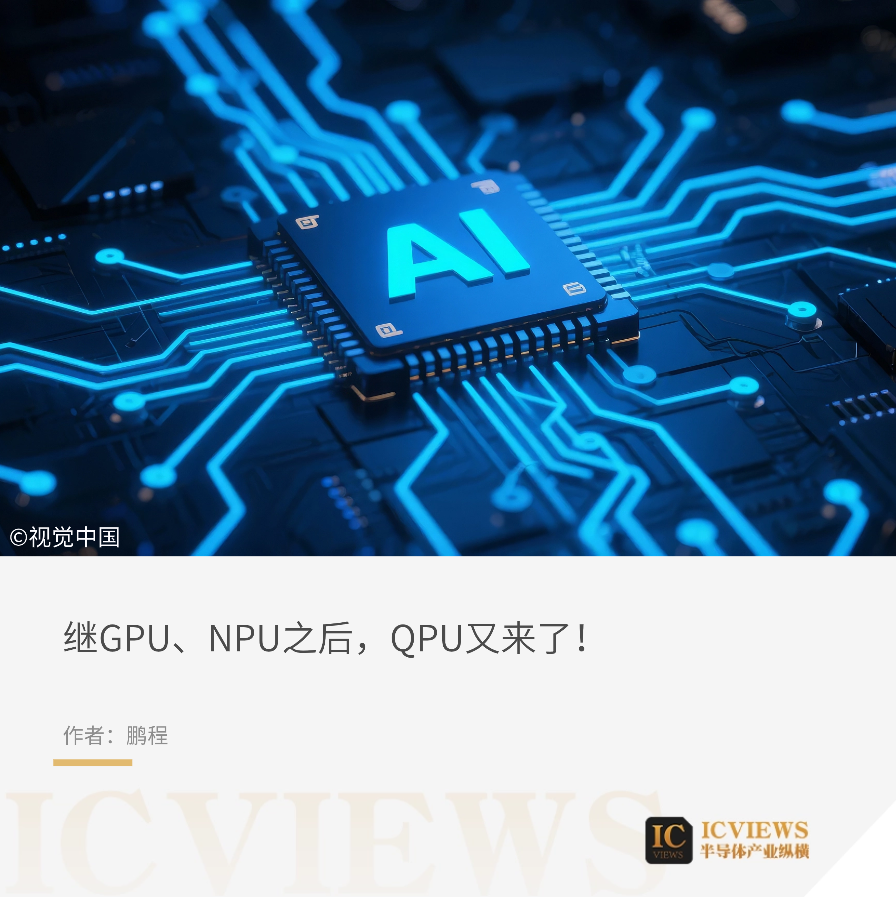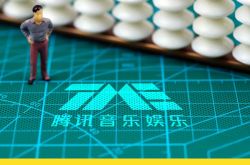The Next Stop for AI: QPU, with NVIDIA Already Making Moves
![]() 11/19 2025
11/19 2025
![]() 558
558

Over the past few years, governments in the United States, China, and Europe have increased their investments in quantum information research and development.
At the most recent GTC conference, NVIDIA CEO Jensen Huang once again mentioned QPU. This also indicates that the commercial application of quantum computing has entered its countdown phase. Within just one week, Google and NVIDIA successively announced technological breakthroughs related to quantum computing.
01
What is QPU?
QPU (Quantum Processing Unit) is the core component of a quantum computer, achieving computational functions based on the principles of quantum superposition and entanglement. Its computational power grows exponentially (2^n) with the number of quantum bits (qubits). Current QPU technologies primarily include physical systems such as superconducting quantum, ion trap, and quantum dot architectures, demonstrating potential in solving complex problems within hybrid quantum-classical computing frameworks.
Quantum computing is a revolutionary computational technology that leverages quantum physical properties to process and solve information problems. It operates on quantum computers, which are specially designed electronic devices allowing manipulation of objects at the quantum scale. At this scale, object behavior differs significantly from everyday experience. Quantum computing utilizes these unique quantum behaviors through programming to perform tasks that traditional computers cannot accomplish.
The most fundamental breakthrough in quantum computing lies in the properties of qubits. Unlike classical bits (0 or 1), qubits can exist in a superposition state, being both 0 and 1 simultaneously, enabling quantum computers to explore multiple possibilities in parallel.

From a technical implementation perspective, quantum computing hardware mainly falls into two categories.
The first category is the "artificial particle" route, which constructs discrete energy level systems based on microstructures, such as superconducting quantum computing and silicon semiconductor quantum computing. Its advantage lies in strong scalability and easy coupling with existing integrated circuit technologies, but it faces challenges in quantum gate fidelity and qubit control. Superconducting quantum computing builds two-level systems based on superconducting Josephson junctions, such as transmon and fluxonium configurations. Its advantages include strong scalability, ease of manipulation, and good compatibility with integrated circuits, making it one of the most mature mainstream approaches. For example, IBM continues to refresh its qubit scale and manipulation precision, while Google demonstrated quantum supremacy through its "Sycamore" chip. Silicon semiconductor quantum computing utilizes electron spins in silicon-based quantum dots to construct qubits. Its core advantage is strong scalability and high compatibility with existing CMOS processes, suitable for large-scale production. However, it is limited by isotopic material processing and grid crosstalk, posing challenges to scalability.
The second category is the "natural particle" route, which directly manipulates microscopic particles, such as ion trap quantum computing, neutral atom quantum computing, and photonic quantum computing. Its characteristics include excellent qubit identity and high-precision logic gates, but it faces challenges in large-scale system construction. Ion trap quantum computing traps charged ions using radio-frequency electric fields and constructs two-level systems using the ion's ground and excited states. Its core advantages include excellent qubit connectivity, extremely high manipulation precision, and long coherence times, making it one of the highest-fidelity routes. However, it faces challenges in large-scale expansion and high-integration measurement and control. Neutral atom quantum computing traps neutral atoms in ultra-high vacuum chambers using laser "optical tweezers" and excites them to Rydberg states to construct two-level systems. Its core advantages include long coherence times, high fidelity, and better scalability than ion traps, with the fastest growth in qubit scale in recent years. Photonic quantum computing utilizes photon polarizations, phases, and other degrees of freedom to construct qubits. Its core advantages include long coherence times, room-temperature operation, and simple measurement and control. It is divided into two types: "logic gate type" (for general-purpose computing) and "special-purpose type" (such as Boson sampling and coherent Ising systems for combinatorial optimization).
These two camps have their own characteristics and advantages and are currently in a stage of parallel development, jointly driving the rapid advancement of quantum computing technology. Industry plans indicate that IBM aims to deliver a 200-logical-qubit system by 2029 and expand it to thousands of logical qubits by 2033.
02
Natural Fit Between QPU and AI
In its 2024 Global Quantum Computing Industry Development Prospect, ICV, a globally renowned consulting firm for cutting-edge technologies, believes that late 2027 to early 2028 will mark a significant milestone for the entire industry. Specialized quantum computers will gradually solve specific problems, such as combinatorial optimization, quantum chemistry, and machine learning, guiding material design and drug development.
The fusion of quantum computing and artificial intelligence is regarded as a crucial direction for the next-generation computing revolution. The core of this integration is not a one-way technological superposition (addition) but a horizontal connection across multiple fields and disciplines, achieving non-linear growth through collaborative innovation. On one hand, quantum computing has the potential to break through the current computational bottlenecks in AI model training and enhance algorithmic efficiency. On the other hand, qubits are susceptible to environmental interference and require complex calibration and error correction algorithms to function properly. Artificial intelligence, in turn, can empower quantum technologies in quantum control, error correction, and algorithmic design, providing new pathways for the stability and scalability of quantum systems.
Currently, the integration of quantum information and artificial intelligence primarily follows two directions: First, AI for Science, such as Google's use of quantum artificial intelligence to optimize error correction codes. Second, quantum computing empowering machine learning. In the future, when quantum computers mature, they will provide computational support for AI.
More importantly, in terms of energy efficiency, the theoretical power consumption of QPU is lower than that of classical processors. Hybrid systems are considered an effective pathway to reduce overall energy consumption. By adopting quantum computing technologies, the energy consumption issues of current intelligent computing data centers can be effectively addressed.
03
NVIDIA's QPU Solution
As a leader in the AI field, NVIDIA naturally cannot miss out on QPU. In June of this year, at the GTC conference held in Paris, France, NVIDIA CEO Jensen Huang stated that the field of quantum computing is approaching a historic turning point, predicting that the next generation of supercomputers will be equipped with QPUs connected to GPUs.
In 2022, NVIDIA announced the launch of a classical-quantum hybrid computer project, proposing the need to build a low-latency connection architecture between GPUs and QPUs and a unified programming model. By establishing a fast, low-latency connection channel between GPUs and QPUs, real-time optimization and calibration of quantum circuits by classical computing resources can be achieved. The core technical toolkit of this system, cuQuantum, has already been commercialized and is being used by institutions such as Amazon Web Services and Menten AI for quantum circuit simulation and drug development optimization.
At the recently held GTC conference in Washington, NVIDIA announced a key breakthrough in the quantum field, introducing NVQLink, which enables direct communication between the QPU and GPU of a quantum computer. Huang pointed out that QPUs for quantum computing have received unprecedented support, with 17 quantum computing companies and eight U.S. Department of Energy (DOE) national laboratories currently integrated into NVIDIA's ecosystem.
NVQLink is essentially an open system architecture designed to tightly couple the extreme performance of GPU computing with quantum processors, constructing accelerated quantum supercomputers. From a technical parameter perspective, it achieves latency below 4.0 microseconds (FPGA to GPU to FPGA round trip) and GPU-QPU throughput up to 400 Gb/s. This speed is crucial for quantum error correction, as quantum states are extremely fragile and must be detected and corrected within an extremely short time.
Although quantum computers theoretically offer fast speeds, they face the fatal problem of being "too fragile": thermal noise and electromagnetic interference can easily lead to computational errors, which can accumulate and make results unreliable. Quantum error correction may be one of the most densely parallel computing tasks globally, which is precisely where GPUs excel.
Currently, in the NISQ (Noisy Intermediate-Scale Quantum) era, qubits are extremely fragile, and their development is limited by classical computing tasks such as error correction, calibration, and control. Solving this bottleneck requires enormous classical computational power. In the future, each NVIDIA GPU scientific supercomputer will be tightly coupled with a quantum processor. NVQLink will handle high-speed interconnection at the hardware level, while CUDA-Q will manage unified programming and control at the software level.
CUDA-Q, NVIDIA's open-source quantum-classical hybrid computing software platform, is positioned as the "CUDA for quantum computing." Its hybrid programming model allows for the collaborative computation of GPU, CPU, and QPU resources within a single quantum program, enabling developers to write code that can seamlessly run across all three and providing dedicated solutions for quantum error correction, significantly lowering the barrier to quantum computing development.
In industry practice, NVIDIA has connected supercomputing systems such as the Jülich Center in Germany and ABCI-Q in Japan through the CUDA-Q platform, constructing a collaborative computing ecosystem between QPUs and GPUs. In hybrid architectures, the QPU is responsible for executing the core modules of quantum algorithms, while classical processors handle data preprocessing and result optimization.
NVIDIA's strategy is highly intelligent—instead of developing its own quantum computers, it focuses on its area of expertise: building bridges between quantum and classical computing. By doing so, it encourages quantum computing chip manufacturers to voluntarily purchase NVIDIA's GPUs for combined use.
04
China's Quantum Computing Industry: Advancing Along Multiple Paths
China is also making significant strides in this field, not lagging behind.
Boson Quantum focuses on the photonic quantum technology route and has completed six rounds of financing. The company's person in charge (leader) stated that while achieving a general-purpose quantum computer is difficult, specialized quantum computers are expected to achieve commercialization within 3-5 years. Currently, the company is exploring marketization in fields such as finance, communications, life sciences, AI, power energy, and materials and chemicals. For example, it is collaborating with pharmaceutical companies to advance life science applications and with China Huaxia Bank and Ping An Bank for financial risk control.
Turing Quantum also adopts the photonic quantum technology route. Ge Zhibin, the sales director of its intelligent computing division, introduced that the company was founded in 2021 and completed five rounds of financing within four years. Its most recent financing, a strategic round worth hundreds of millions of yuan, was completed on July 21, 2024, led by Shengshi Investment, with a focus on product development and industrial acceleration of photonic chips. On November 7, 2021, the Shanghai Jiao Tong University Wuxi Photonic Chip Joint Research Center was officially signed, and Turing Quantum began constructing China's first photonic chip pilot line rely on (relying on) the Shanghai Jiao Tong University Wuxi Photonic Chip Research Institute, with a total investment of 650 million yuan. The key equipment for the pilot line began arriving in January 2024, marking China's entry into the substantive industrialization stage in the field of photonic chips.
QuantumCTek has chosen the superconducting route. Zhang Xujing, the person in charge of its quantum computing division, stated that quantum computing and AI mutually promote each other, and their combination will produce a "1+1>2" effect. Currently, four quantum computers globally have achieved quantum supremacy, including Canada's Northern Lights, Google's Sycamore, China's "Jiuzhang" photonic quantum computer, and the "Zuchongzhi" superconducting quantum computer series.
China Mobile recently released the "Wuyue Quantum Intelligence" quantum artificial intelligence platform, the White Paper on Quantum AI Empowering Finance and Biomedicine Applications, and the Quantum-Intelligence Fusion Computing Power Open Plan, demonstrating its further commitment to quantum technology. Since 2019, China Mobile has been investing in quantum technology and has led multiple major scientific research tasks, focusing on basic software and applied algorithms related to quantum technology.
Pan Jianwei, an academician of the Chinese Academy of Sciences and a professor at the University of Science and Technology of China, stated that it is expected to solve the quantum computing error correction problem within 5-10 years and to build a fault-tolerant general-purpose quantum computer by 2035 or 2040.
The multi-path advancement of China's quantum computing industry, particularly the rapid development of the photonic quantum technology route, not only drives the commercialization of quantum computing but also provides crucial support for computational technology transformation in the post-Moore era. With breakthroughs in photonic chip technology and the expansion of quantum computing applications, China is poised to take a global leading position in this field.








